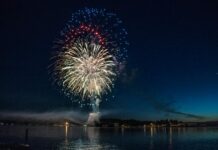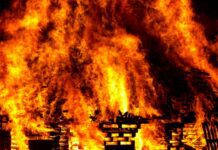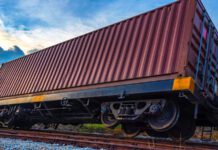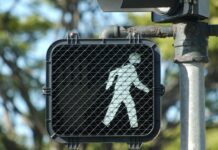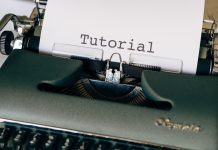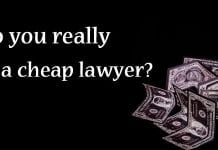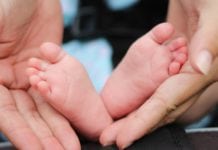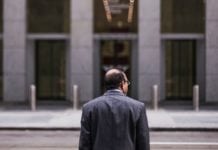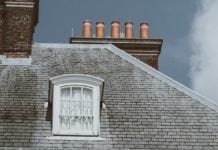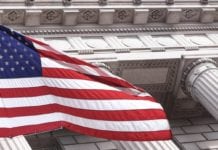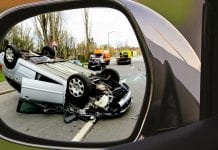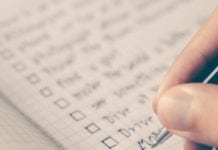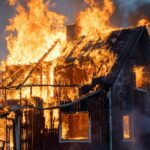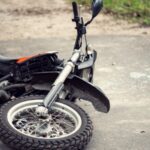Table of Contents - Jump Ahead:
With 161,374 yearly slip and fall injuries and 34,573 related fatalities in the U.S., according to a recent Center for Disease Control (CDC) report, slip and fall injuries are common. Too often, many injuries are serious and life-altering, and some end in fatalities.
Increased awareness about these injuries and understanding of how avoidable they are has resulted in lots of improvements we all can see. But there is still a long way to go, especially when it comes to sidewalks.
Premises Liability and Slip & Fall Injuries
These are what lawyers refer to as premises liability claims. The negligence which forms the basis for the claim is a defect in premises, resulting in harm from a slip and fall accident. California premises liability laws set the legal responsibility of owners and occupiers of property to keep areas safe from potential hazards. If you or a family member was seriously injured due to a slip & fall or other injury on another’s property, contact Callaway & Wolf to schedule a free consultation regarding potential compensation
The basic statute (law) setting forth the premises liability law is Civil Code Section 1714:
“Everyone is responsible, not only for the result of his or her willful acts, but also for an injury occasioned to another by his or her want of ordinary care or skill in the management of his or her property or person, except so far as the latter has, willfully or by want of ordinary care, brought the injury upon himself or herself.”
California being the largest state, there are many, many cases interpreting and further stating the law on premises liability. Cases on sidewalk injuries, for example, have defined a “trivial defect rule,” which is generally interpreted as requiring a height differential of one inch or more between adjacent sections of sidewalk pavement before liability will be found against a property owner for a trip and fall. Of course, not all sidewalk cases involve trips on areas of broken pavement, or sections of pavement raised up by tree roots or other causes, but many do. At Callaway & Wolf, we have also had successful sidewalk cases based on slipperiness—failure to maintain a safe surface.
Premises Liability is Not Just Slip & Fall Accidents
Other premises liability cases involve slips on floors inside premises, typically due to a substance on the floor. In this type of case, “notice” of the hazard must be proved. This means that there must be evidence that the store owner or management knew about the condition, such that they had a chance to take care of it. Thus a store won’t be held liable if one customer drops a Coke, and another slips in it 60 seconds later. Notice comes in two types: actual, and constructive. A store proprietor has actual notice when someone tells an employee about a hazard, or an employee sees it. Another way for a store owner to be held to know of a hazard is when you can prove that an employee caused the hazard.
Most cases end up being based on allegations of constructive notice. With a constructive notice case, attention turns to how to prove how long a hazard existed on the floor. Often it is impossible to prove this with any certainly. This is where everyone starts looking at the store’s “sweep logs.” To prove that they are meeting their duty to regularly inspect for hazards, store staff keep records. If these records do not show an inspection of the area where an incident occurred within a reasonable time prior to the incident, there is a legal presumption of constructive notice of the hazard. Oftentimes, though, we find that stores are better at keeping logs than they are at actually inspecting and cleaning. Some stores don’t keep the logs. Costco, for example, claims that all employees on the floor are continually inspecting for any hazards, so all of the store is being observed regularly.
When you or a loved one were injured in a slip and fall accident, there are many other factors to consider, including previous complaints about an existing hazard, determining the negligence of a business or property owner and determining negligence, if applicable, of the injured individual. Any history of prior incidents can also be very helpful. In virtually every case, there will be allegations of comparative fault or negligence. Often the owner of the premises claims that the hazard was “open and obvious,” so that it could have been avoided if the claimant had been looking where they were going. In other cases they will allege that there was no notice, or that the defect in the premises was trivial, and thus not legally actionable. They will virtually always make one or more of these defensive claims. They will also frequently fight in pre-trial discovery to avoid giving us information about prior incidents. Often they will try to use specious statistics on the volume of people who have passed through the same area, presumably without falling.
There will also be questions asked about any other factors which could support a defense of comparative fault, such as:
- What kind of shoes the injured person was wearing
- What the injured person was doing, where they were looking, etc.
- What the injured person was carrying at the time of the incident
Generally, common slip and falls occur because of:
- Loose and uneven floors and sidewalks
- Cluttered stores and homes
- Substances and liquids on floors
- Elevator and escalator accidents
- Inadequate lighting
- Unsteady staircases and loose handrails
- Unsafe stairs or railings that do not meet building code specs
In general, a property owner or someone running a business open to the public is required to maintain safe conditions for guests, customers, and those allowed by federal and California regulations to be on the property, such as mail delivery persons. If it can be proven in full or part that a property owner was negligent in maintaining a safe property, and you slipped and fell, you are legally entitled to be financially compensated for your injuries.
If the property owner does not use common sense and should have known conditions were dangerous or hazardous and failed to either fix the hazard or give a clear warning, they are liable for injuries to persons legally on their property.
Building a Personal Injury Claim From a Slip & Fall
To build a personal injury slip and fall case, it’s necessary to compile evidence, including any photos of the dangerous scene, witness testimony if someone saw you fall, accident reports, medical records and any evidence you can acquire about what caused your fall. As the claimant, you have what’s called “the burden of proof.” Also, should the property owner or their insurance company question your culpability in your injuries, which they will likely do, if possible, you should collect and safeguard items that caused your slip or trip. Saving the shoes you wore, for example, is important to show that they were reasonable. High heels or very worn shoes with slick bottoms make a case more difficult.
Premises liability slip or fall cases are very tough. We look at reported verdicts and case outcomes for California and see that a majority of these cases which go to trial lose completely. Defendants see the same reports of course, and as a result they often contest these cases strongly. They are much less likely to settle easily than many other types of injury cases. Often expensive experts are involved. The hard-fought nature of this practice area, with its greater burden of work and expense, raises the bar for the size of a feasible case. This is why people who have had relatively minor injuries in a fall often have a harder time getting a lawyer to help, when the same seriousness of injuries could make for a car accident case that many lawyers would be willing to take.
The qualified, skilled personal injury attorneys at Callaway & Wolf Law Firm can help you gather the information needed to pursue your slip and fall injury case, including accident and medical records. And it’s important not to wait. The more time that passes after your injury, the more likely the accident scene will be cleaned or repaired, which will make winning a successful personal injury claim more challenging. However, if some time has passed and evidence is gone, medical records documenting your injuries and witnesses and medical experts can still prove valuable for successfully securing monetary compensation from the property owner.
When you’ve been injured because of a slip and fall on someone else’s property, to successfully pursue a premises liability monetary settlement will almost always require the assistance of an experienced slip and fall attorney team, as these claims are typically denied initially.
Callaway & Wolf’s lawyers are highly experienced in premises liability law and slip and fall accidents. As your law firm, our knowledgeable, skilled legal team will determine liability exists in your particular case. If we determine it does, we will vigilantly negotiate and fight for your medical expenses, any lost wages, pain and suffering or a wrongful death when a loved one is injured due to a trip or slip and fall. Callaway & Wolf’s San Francisco personal injury law firm has the ability to uncover the truth and hold those who are responsible financially accountable.
As well known personal injury attorneys who are respected by peers and adversaries, founding partner Boone Callaway and Vadim Nebuchin have successfully handled hundreds of personal injury cases in San Francisco and throughout the Bay Area. Backed by our well-honed negotiation strategies and litigation savvy, when we represent you, we’ll collect the facts of your case, review your medical records, and assess the property owner’s culpability in your injuries or a loved one’s death.
With over two decades experience handling personal injury cases, our law firm possesses the knowledge, financial capital, resources and support staff necessary to uncover the truth and hold the property owner who caused your injuries, or the death of a loved one, accountable for their dangerous property conditions. Callaway & Wolf’s extensive record of MULTI-MILLION-DOLLAR verdicts and settlements for our clients assures that we will aggressively battle on your behalf.
What’s more, though investigating, preparing, negotiating and filing civil lawsuits is highly costly, Callaway & Wolf will never charge you any money up-front. Because we work on a contingency basis, we’ll only get paid when we win and acquire your just monetary settlement.
California Slip & Fall Statute of Limitations
It’s important to act quickly when you’ve been injured because of a slip and fall accident. California statutes of limitations set deadlines within which you can file. A personal injury claim must be filed within two years from the incident, but if the injury was not immediately discovered, a victim has one year from the date the injury was discovered to file a claim.
If a governmental entity such as the State, or a city or county entity such as BART is involved, this time limit shrinks down to just six months for a claim filing deadline. See the California Tort Claims Act.
For expert help investigating a slip and fall injury and filing a claim, contact Callaway & Wolf Law Firm’s respected, skilled personal injury attorneys to schedule a meeting in our San Francisco office. During a free consultation, we’ll attentively listen to what happened and advise you on whether and how you can act against the property owner whose premises caused your injury or the death of a loved one. But if you’re too injured to travel, we’ll come to your home, hospital room or rehabilitation facility.
To begin your fight for monetary compensation, call Callaway & Wolf today at (415) 541-0300 to schedule your personal, compassionate, and respectful consultation.
